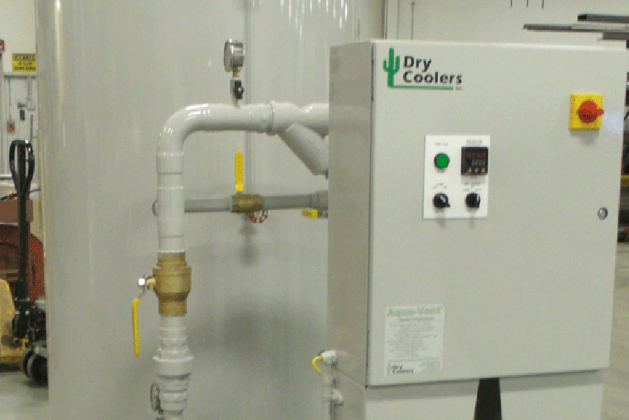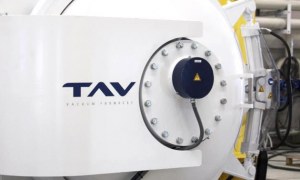Many cooling systems today utilize a cooling tower. Cooling towers depend on a sump tank of water that is pumped over a PVC fill while ambient air is blown over the falling water causing evaporation. Each pound of water evaporated removes 1,000 Btu/hr from the water stream. Generally, cooling towers consume about 1.5to 2GPM (gallon per minute) of water for each 100 GPM of water pumped. In most locations cooling towers are designed to generate 85°F (~30°C) water in the summer. There are two basic reasons customers don’t want a cooling tower; they don’t want to supply the makeup water anymore or the chemical treatment of the cooling tower water is undesirable. Some locations (i.e. New York City) are requiring strict monitoring and reporting of the water quality to reduce the risk of Legionnaire’sDisease.
To look at this issue, it comes down to temperature. As stated above, a cooling tower can make 85°F (~30°C) water in the summer. An air cooled system (aka dry cooler) can make water about 10°F (6°C) above the ambient air. So an air cooled system will run hotter in the summer.
There are now hybrid systems (aka adiabatic coolers) that spray a fine mist of water under the air-cooled heat exchanger to cool the ambient air before the air is blown over the coil. Their advantage over a standard evaporative system is the adiabatic cooler only evaporates water on hot days when the ambient temperature requires it.



